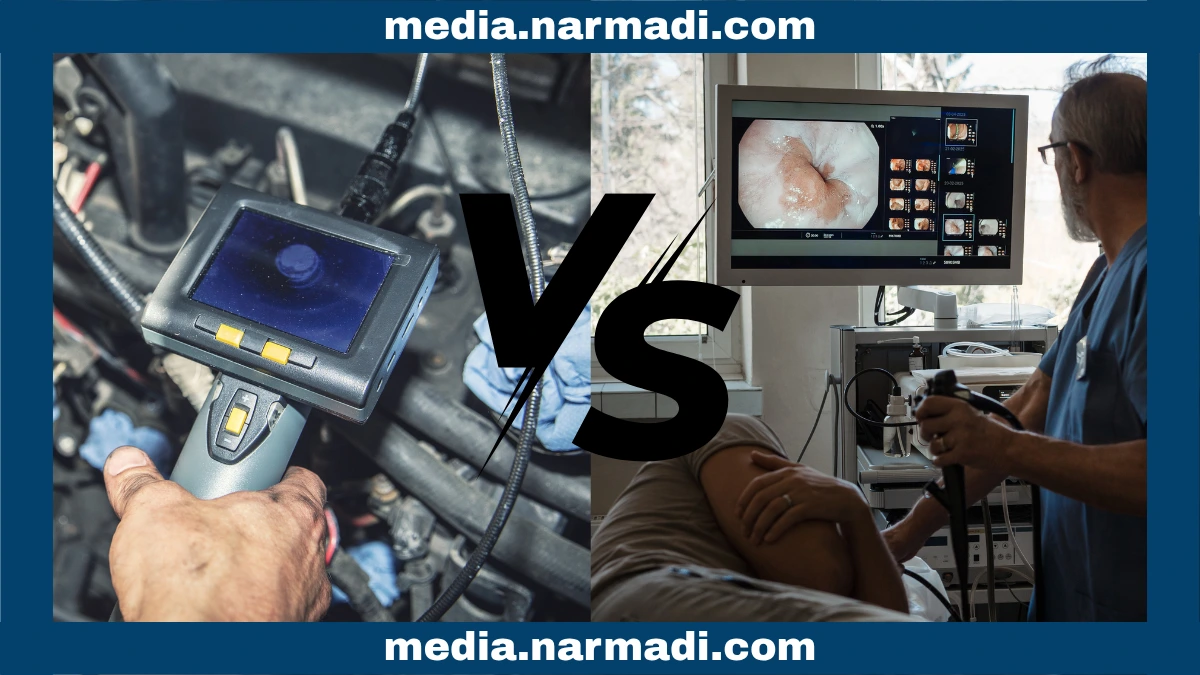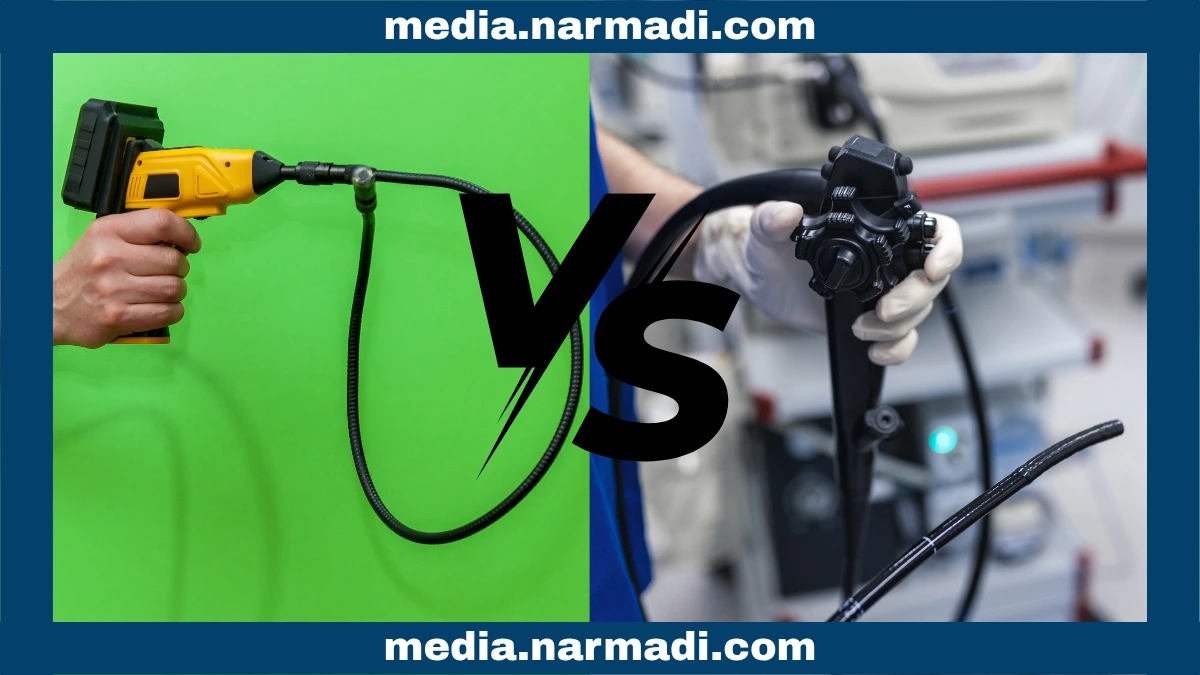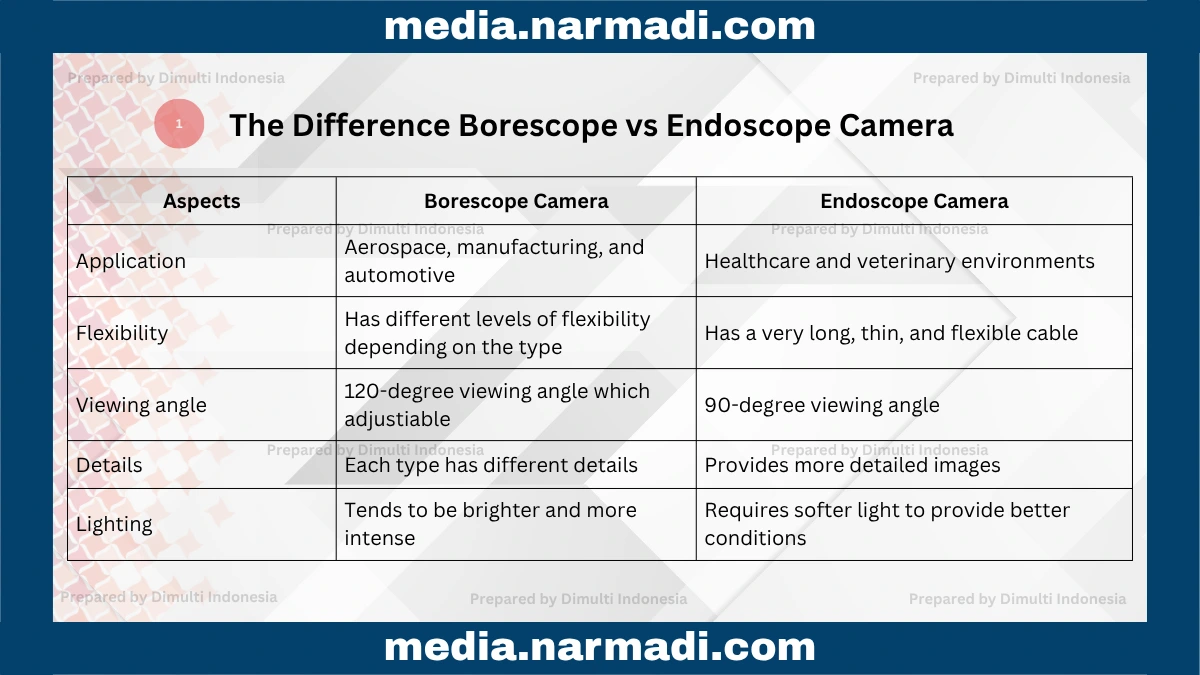Borescope and endoscope cameras are the key to assisting with inspections in internal areas. Although both are devices that allow you to inspect, the borescope vs endoscope camera have some significant differences.
The differences between borescope vs endoscope camera include application, flexibility, viewing angle, details, and lighting.
This article will explore the key differences between borescope vs endoscope cameras to assist with inspections in internal areas.
What is a Borescope Camera?

A barescope camera is an electronic device that is often used in industries such as manufacturing, aerospace, and automotive. This camera is used for inspection to provide visualization of areas that are difficult to reach, narrow, or closed. This tool is equipped with a small camera placed at the end of a cable or flexible tube.
It is usually also equipped with an LED light so that it can still capture images well. This tool allows images to be taken without having to dismantle the area to be inspected. The images or videos from the barescope camera can be accessed in real-time from a monitor screen, computer, or mobile phone to view the inspection results in more detail.
What is an Endoscope Camera?

An endoscope camera is an electronic device that is often used in the healthcare industry to help doctors examine the inside of the human or animal body. This device is a small camera at the end of a thin, flexible tube that allows the doctor to see the condition of internal organs.
The doctor sees the condition of the internal organs directly through the camera, which transmits images to an external monitor. With this device, doctors can diagnose diseases and perform medical procedures without having to perform major surgery.
The Differences Between Borescope vs Endoscope Camera

Borescope and endoscope cameras are devices that allow you to have good inspection. Here are the differences between borescope vs endoscope cameras:
Application
Borescope camera: Used in various industries such as aerospace, manufacturing, and automotive. This camera is used for inspection to provide visualization of areas that are difficult to reach, narrow, or closed.
Endoscope camera: Used in healthcare and veterinary environments. Endoscopes are most often used by doctors and veterinarians.
Flexibility
Borescope camera: Has different levels of flexibility depending on the type. Rigid borescopes are not flexible; flexible borescopes have greater maneuverability, and wireless borescopes can be more flexible with wireless connectivity.
Endoscope camera: Has a very long, thin, and flexible cable. This allows the device to be moved and navigated through complex pathways within the human body.
Viewing angle
Borescope camera: Provides a 120-degree viewing angle and can be enhanced by adjusting the device.
Endoscope camera: Only offers a 90-degree viewing angle.
Details
Borescope camera: Each type has different details. The most detailed models are the most modern ones, offering HD or ultra HD video resolution.
Endoscope camera: Provides more detailed images than a borescope because it requires very high accuracy.
Lighting
Borescope camera: Tends to be brighter and more intense, thereby improving visibility inside structures and places that lack natural light.
Endoscope camera: Requires softer light to provide better conditions for examining internal structures and organs of the body.
That’s the difference between borescope vs endoscope camera that you can consider when choosing according to your personal needs.
A borescope camera is a device used to perform inspections in the aerospace, manufacturing, and automotive industries. However, an endoscope camera is a tool used specifically by doctors to view the internal organs of humans or animals.